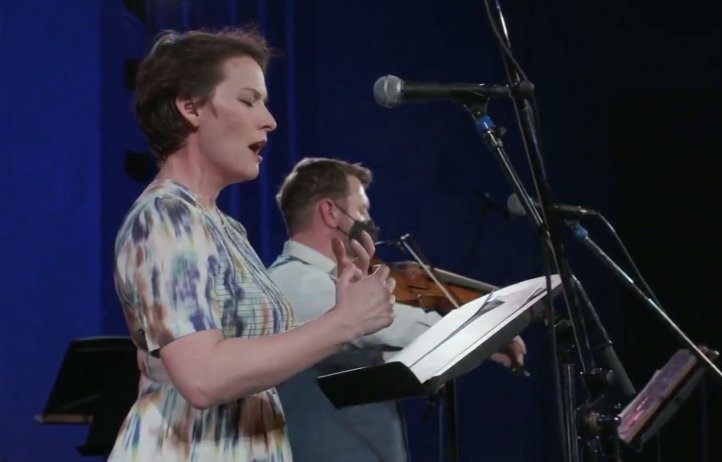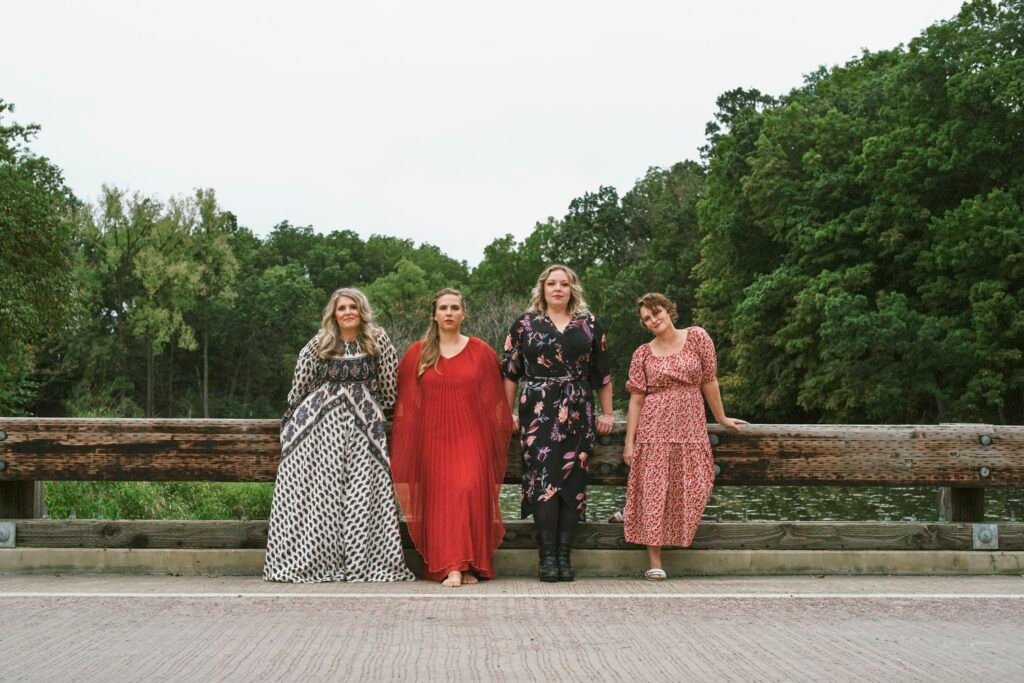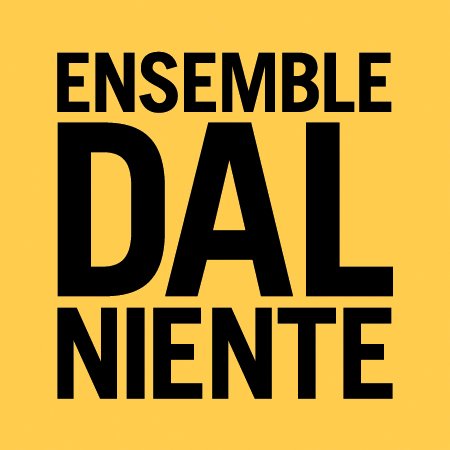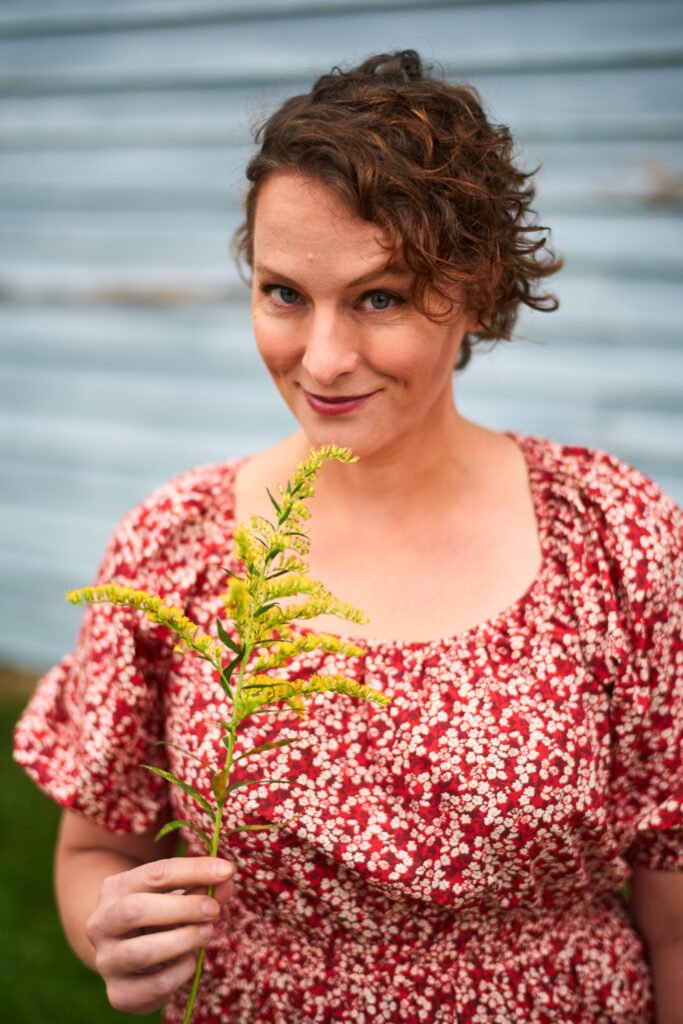Commissioning – Co-Creating – Interpreting

Composer Collaborations
Carrie has personally commissioned and premiered more than a dozen new works of vocal chamber music, and she has premiered and recorded dozens of additional works in collaboration with organizations including James Sewell Ballet, the Schubert Club, the Barlow Foundation, the Mellon Foundation, Quince Ensemble, Ensemble Dal Niente, and Outpost New Music. Her personal mission with her commissioning is to urge composers to explore techniques that surpass traditional ideas about what the voice can do and to disrupt what audiences come to expect from classically trained singers. Her collaborations have led her into explorations of overtone singing, electronics, playing instruments and singing at the same time, songs with invented languages, and more.
Major collaborations include:
- Music, dance, and theatre with Kamraton Ensemble, Jocelyn Hagen and Abbie Betinis
- Voice and electronics with Aida Shirazi and Andile Khumalo, Melia Watras
- Self-accompanied works with Shawn Okpehbolo, Kari Besharse, Andres Carrizo
- New art song with Christopher Trapani

Quince Ensemble
Quince Ensemble is a treble voice quartet dedicated to changing the paradigm for contemporary vocal chamber music. Described as “the Anonymous 4 of new music” by Opera News, Quince continually pushes the boundaries of vocal ensemble literature. By performing almost exclusively the music of living composers, and actively commissioning works with a broad and curious aesthetic ear, we seek to create a landscape of contemporary vocal music that is embodied, complex, and expressive, with the musical boldness and virtuosity that is often reserved for instrumental groups. As dedicated advocates of new music, Quince regularly commissions new works for voices, providing wider exposure for the music of living composers. Quince thrives on unique musical challenges and genre-bending contemporary repertoire.

Ensemble dal Niente
Ensemble dal Niente performs new and experimental chamber music with dedication, virtuosity, and an exploratory spirit. Flexible and adaptable, Dal Niente’s roster of 26 musicians presents an uncommonly broad range of contemporary music, guiding listeners towards music that transforms existing ideas and subverts convention. Audiences coming to Dal Niente shows can expect distinctive productions—from fully staged operas to multimedia spectacles to intimate solo performances—that are curated to pique curiosity and connect art, culture, and people.

Uluuul
Imagine a playground full of children and alien lifeforms singing songs from their half-remembered past lives – that’s uluuul. uluuul (Mabel Kwan, Mauricio Pauly, and Carrie Shaw) are an electroacoustic trio that combines folk tendencies with experimental instruments. The trio creates works collaboratively, employing a broad palette of synthesizers, guitar pedal effects, samplers, live acoustic sounds and live- processed sounds. The focus of their works is timbre, its qualities of artificial sounds that approach human sounds and vice versa, and the way in which layers, expanses, and ornaments give form to otherwise abstract expression. The trio collectively represent award-winning ensembles from around the globe, including Ensemble Dal Niente, Quince Contemporary Vocal Ensemble, and Distractfold Ensemble.

Past Projects
- Outpost, Minnesota’s 21st century variety-show featuring local musicians and spoken-word artists founded by Carrie and Sam Bergman.
- The Boston Early Music Festival, recognized as a leader in the field of early music.
- “Slippery Fish,” a piece by Jocelyn Hagen featuring dancer/choreographer Penelope Freeh and Sam Bergman
- Abbie Betinis’ “Burt Family Carols” Series
Contemporary Opera Practice and Research
If I’m honest, my research is quite literally all over the map, drawn from one topic to the next by way of the dozens of new and early music collaborations of which I’ve been a part through the years and each of which I cherish. Some of my research is scholarly in nature, looking at vocal works through the lens of historical context or notational practices, for example. Some is ‘embodied’ research. Because much of my work challenges the limits of technique, I spend a lot of time developing vocal techniques to face these challenges, managing resonance, breath control, register shifts or multimodal techniques, and learning about performing in new media formats some of which, even 10 years ago, was impossible to imagine, much less to train for.
As a teacher and performer, I welcome collaborators and students who are inspired by both traditional and innovative topics, but what excites me most is investigating creativity and expression especially in the works of composers who search(ed) for new musical languages and methods of treating text. For 17th-century vocal works whose scores are often skeletal, I’m fascinated by responsibility that is placed on performers to make choices of articulation, phrasing, harmonic and instrumental realization and arranging, and tone color that bring these scores into richly detailed life, and developing these interpretations is as much a matter of researching performance treatises as it is about developing an ear and a perception for how these choices support an emotional concept. With contemporary chamber music, I am engaged in a multi-year research project with composer-performers Mauricio Pauly and Mabel Kwan, in which I spend significant time recording and cataloging timbral manipulations of traditional and extended techniques and then applying these sounds to improvisations, listening for the spectral qualities of my collaborators’ sounds and adding my own sounds (acoustic and electronically processed) whose spectral qualities distinctly contrast from the instrumental sounds. I listen for hierarchy of content in the texture, how sounds combine or stand independently from one another. Although these musics are separated by hundreds of years, they are unified by a common research interest – learning more about how we educate our ears and, consequently, our creative response to emotion and a language of expressivity.
I’m also in the midst of a multiyear research project centering on operas of the 21st century. Over the last two decades, connections between society and opera have been made stronger as composers have increasingly chosen to set new stories and characters to music, to write for singers whose voices and gender identity perhaps don’t align with traditional categories, to consider musical tools borrowed from non-classical practices, and to think about how opera can live in media other than traditional concert hall stages. Many traditional opera companies have seen dwindling audiences and donations for the better part of half a century, and it is an undeniable reality that classical singers are being asked to do their jobs differently than they were 100 years ago. My research goal in this project is to learn enough about the most interesting and productive trends in opera to adapt opera training to adequately address these changes in the industry and the skills required to thrive.